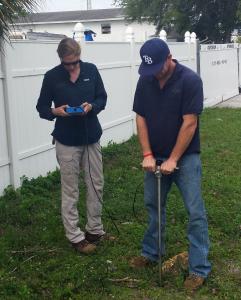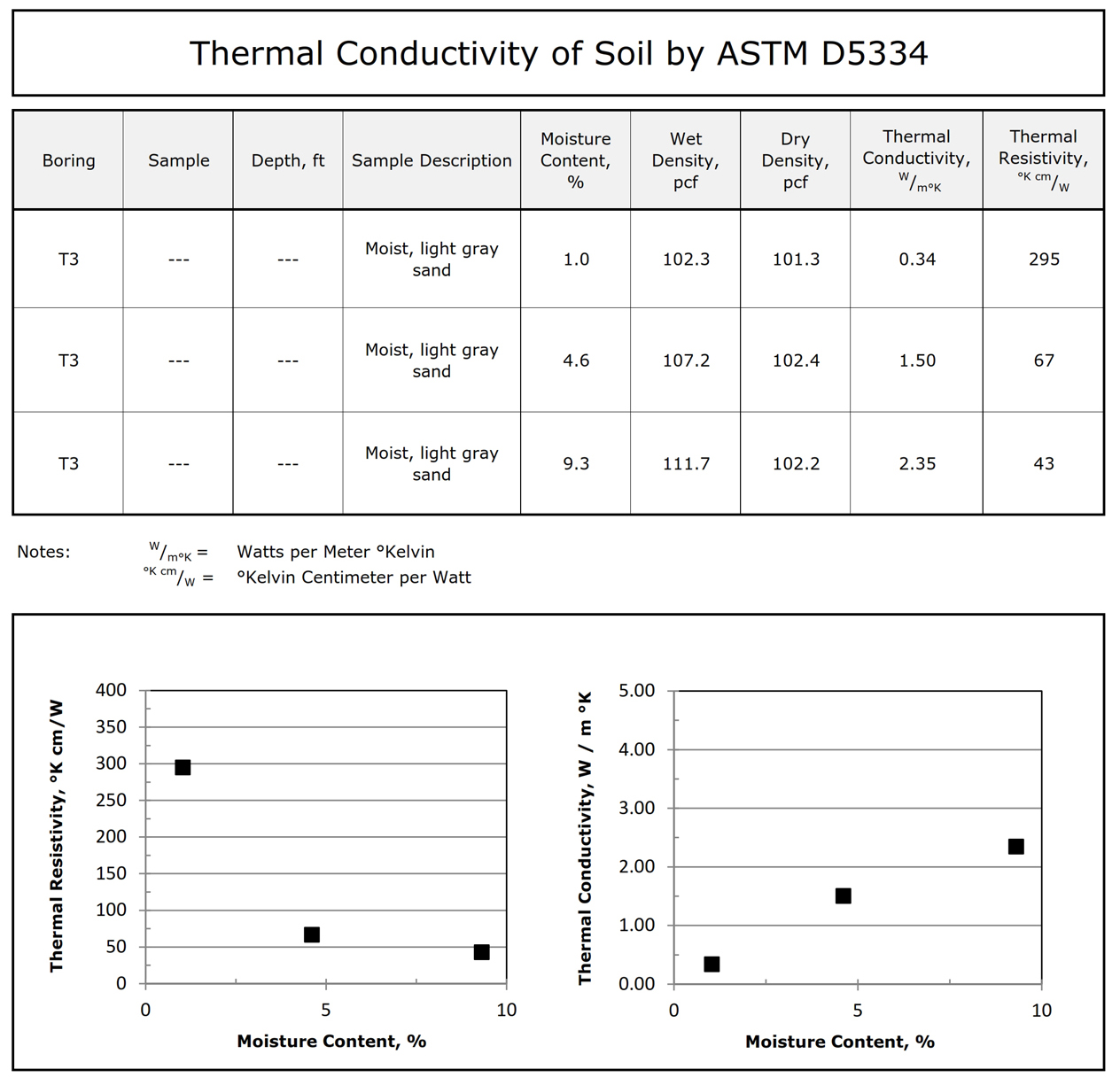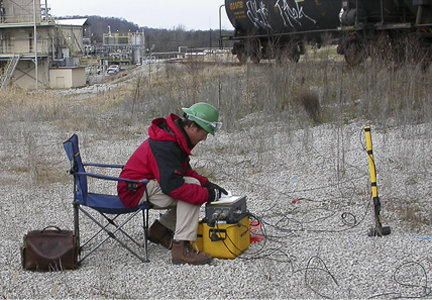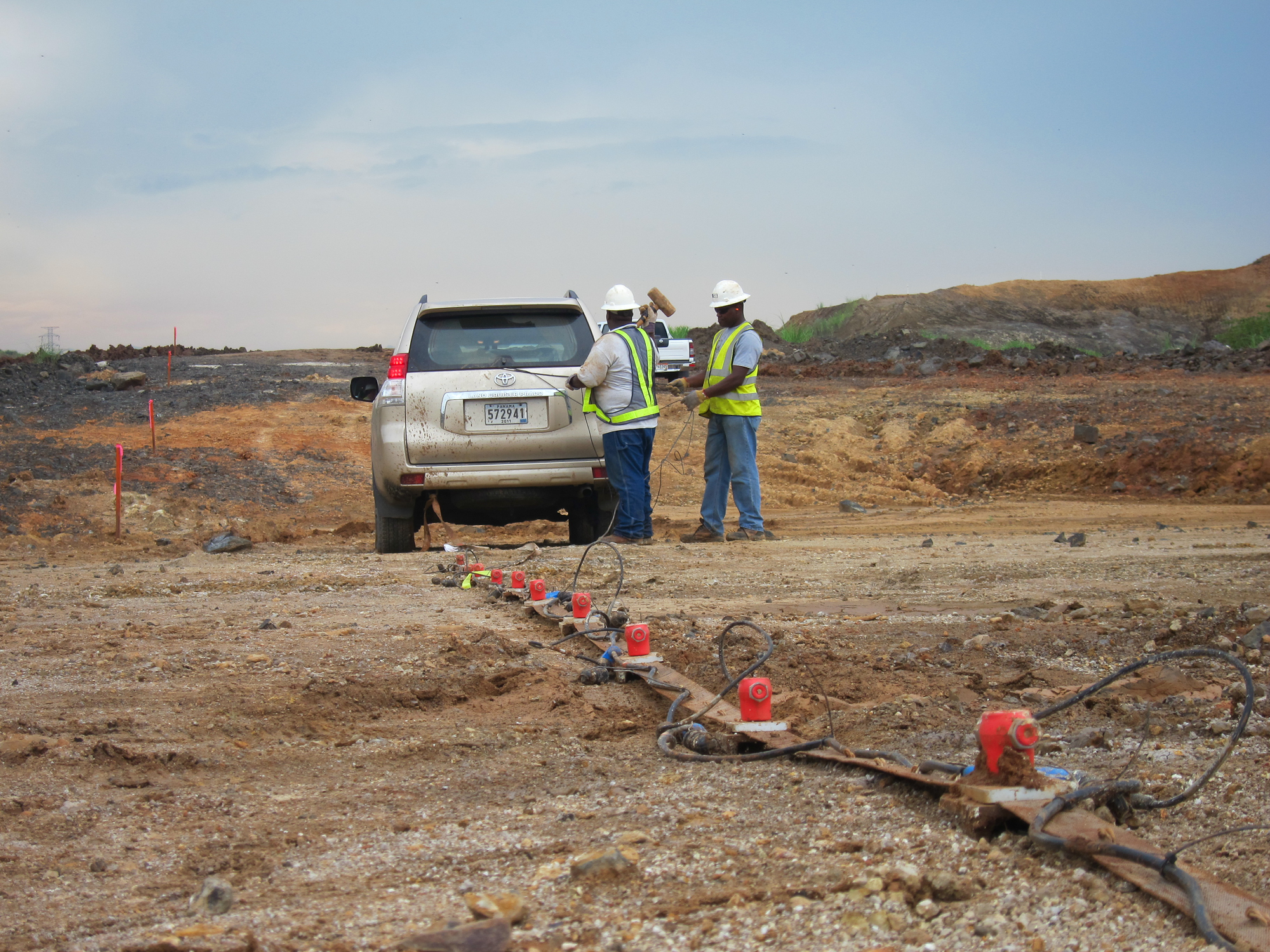Thermal Resistivity

The thermal resistivity and conductivity of the soils is critical in the design of underground power transmission systems. The purpose of the thermal resistivity testing is to provide the thermal conductivity (in W/m oK) or thermal resistivity (in oK cm/W) of soils at a selected depth. The tests can be performed either in-situ or from samples that are collected in the field and analyzed in a laboratory. Both tests are performed using the transient heat method and are conducted in accordance to IEEE Standard 442-1996 and ASTM D5334-08 Standard Test Method for Determination of Thermal Conductivity of Soil and Soft Rock. .
 Thermal resistivity tests are typically performed as part of the testing requirements prior to the installation of high voltage power lines or heated pipelines. GeoView uses the Hukseflux FTN01 Field Thermal Conductivity System for in-situ field testing. The FTN01 is specifically designed for the performance of in-place measurements to depths of 1.5 m without any required trenching. For laboratory tests, GeoView will collect the samples and utilize a nationally recognized laboratory for the analysis.
Thermal resistivity tests are typically performed as part of the testing requirements prior to the installation of high voltage power lines or heated pipelines. GeoView uses the Hukseflux FTN01 Field Thermal Conductivity System for in-situ field testing. The FTN01 is specifically designed for the performance of in-place measurements to depths of 1.5 m without any required trenching. For laboratory tests, GeoView will collect the samples and utilize a nationally recognized laboratory for the analysis.
The benefits of in-situ testing are cost, time and less disturbance to the ground surface. Laboratory analysis can provide data that in-situ testing does not provide. The most significant of which is a thermal dryout curve. Since the thermal conductivity of a soil is affected by water content, a dryout curve can show the thermal conductivity at varying levels of moisture content. Other data used in a dryout curve includes the compaction, density and temperature.

Example of Laboratory Analysis Showing a Dryout Curve







